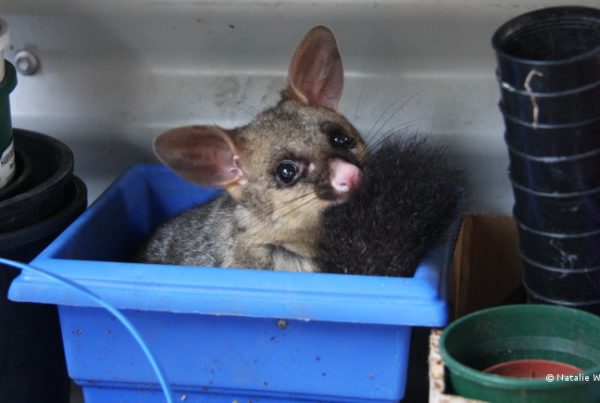Queenslanders are being told to prepare now for the upcoming summer wet season, with the third La Niña in a row declared for Australia’s east coast.
The devastation of the February 2022 flood disaster is still fresh in the minds of many residents, now facing another spring and summer of above-average rainfall and potential flooding.
Here’s how to ensure you’re best prepared for the wet weather ahead.
Check your insurance cover
Experts say reviewing your current level of insurance cover should be a priority.
Head of General Insurance at Compare the Market, Stephen Zeller, said some major insurance providers could introduce “temporary embargoes” on the sale of new policies or people amending their existing policy because of the La Niña declaration.
This means homeowners would be denied coverage.
“We know that these weather events are going to hit us at any time through spring and the summer [and] the biggest mistake that most customers fall into is they leave it far too late to look at their insurance,” Mr Zeller said.
“Anytime the insurers think there’s possible flooding, they will issue an embargo as a safety precaution generally because they don’t want 10,000 new policies in that area, because it’s going to cost them.
“If there’s an embargo in your area and you ring your insurer, you can’t take out a brand-new policy, you can’t update your existing policy, you can’t enhance your existing policy, you can’t call your insurer and lower your excess.
“If customers wait until that moment to either get insurance in place or call their insurers to change their policy, it’s far too late to lock in protection.”
Mr Zeller said it’s also important to check your home insurance covers flood damage, and pay attention to the terminology.
“Flood cover is optional for some insurers, it’s not an automatic inclusion, which is another mistake customers tend to make,” he said.
Don’t forget about your car, too.
“A lot of people just think about home and contents, but it’s really important that you’ve got adequate car insurance in place as well,” he said.
“Flooding doesn’t just impact homes, your cars can get flooded as well out on the streets.”
Other tips for your insurance
An Insurance Council of Australia spokesperson has outlined some more steps to reduce the level of impact experienced during a flood.
- Prepare a room-by-room inventory of the contents of your home
- Avoid underinsurance by checking the insurance sum matches the rebuild value of your home and replacement/repair of contents
- Consider structural changes to lower the risk of a property being affected by flood
- Keep important papers in a safe place away from potential flood waters
If in doubt, call your insurer.
The latest figures put this year’s flood catastrophe as the third-worst natural disaster recorded in Australia in terms of insured losses, with 225,000 claims valued at $4.8 billion.
Prepare your home
Queensland SES Assistant Commissioner Andrew Short said volunteers were ready to respond, with a “high probability” of rain events being more severe.
“We’ve got a number of catchments that are still pretty wet and that’s going to certainly be a factor for us when we start to see the rain coming,” Mr Short said.
“I think we have a little more time to wait before that and it’s good because it means people can use that time to make sure they’re prepared as best they can.
“We’ve done fairly well … but we certainly won’t be putting our guard down.
“We as a state service work hand in hand with local government to be prepared for the weather season when it comes and certainly a lot of work has been done already.”
Mr Short said homeowners should prepare now by cutting down overhanging branches, clearing leaves and dirt from your gutters and cleaning areas around their properties.
“What we find is that people who take these preparations and who do these things before an event do much better,” he said.
Other things to prepare include:
- Fix broken roof tiles and anything else with minor damage around your home
- Have an evacuation plan in the event of major damage or flooding
- Move valued possessions to higher places in your home
- Pack an emergency bag – items to include are outlined on the Get Ready Queensland website
Brisbane City Council is also offering residents 150,000 free sandbags, triple the standard stockpile, more than a month before the wet season usually begins.
The sandbags will be available at four depots in Zillmere, Newmarket, Morningside and Darra, over the next three weekends.
State Emergency Service (SES) volunteers and staff will also offer training in how to use them.
What long-term disaster mitigation is happening?
Brisbane City Council says it has addressed 12 recommendations put forward as part of this year’s review of February flooding, including installing new automated warning signs on roads that frequently flood.
The council will publish a new flood map interface on its website in the coming weeks that will include details of river, creek, and overland flooding, Deputy Mayor Krista Adams said.
Council has also begun negotiations to buy back the homes of 16 residents impacted by February’s devastated floods.
Late last month, Lord Mayor Adrian Schrinner said he had received the first $50 million payment of state government funding for the Voluntary Home Buy-back Program (VHBP).
The Queensland government has set the eligibility criteria and rules around the funding and will task local councils with distributing the cash settlements.
House prices are on the rise. Find out the value of your property now.
Get a free online property report from Hicks Real Estate. It takes seconds.






